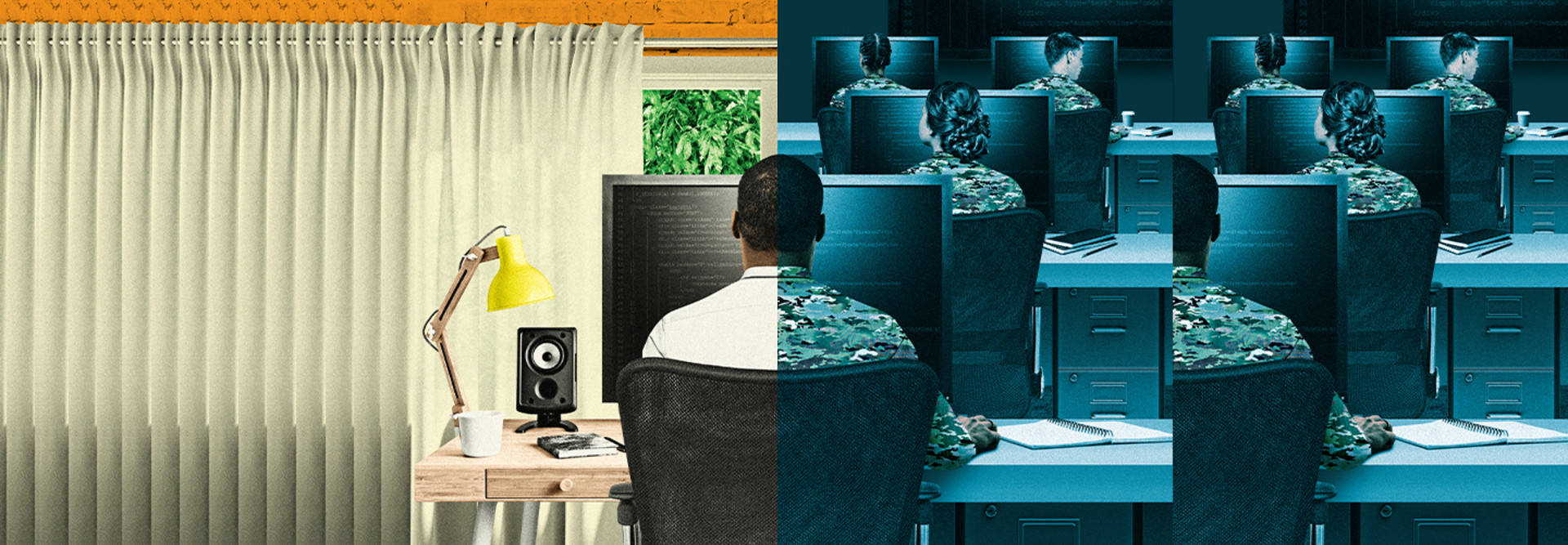When COVID-19 cases erupted across the nation in spring 2020, many federal agencies that provide educational opportunities and continuous training for their workers scrambled to adopt a virtual learning model.
To keep training and education moving for workers during the pandemic, federal agencies used everything from simple videoconferencing tools and cloud-based productivity suites, such as Google Workspace and Microsoft 365, to more complex applications such as simulations and learning management systems.
“There are some things we would do differently, but some things we will do exactly the same,” says Todd Boudreau, deputy commandant of the U.S. Army Cyber School at the Cyber Center of Excellence (CCoE), Fort Gordon, Ga.
“But it absolutely raises our confidence that if we had to go through this again, we are much more prepared,” he adds.
RELATED: How does the Army use augmented reality to train soldiers?
The Army Kept Cyber Classes on Track
Soldiers assigned to support signal, cyberspace and electronic warfare operations take training courses at Fort Gordon that last from four weeks to nearly 18 months.
Because hundreds of trained soldiers graduate and hundreds more new soldiers begin training each week at the base, the CCoE could not allow pandemic-related delays to push training behind schedule.
“In the initial months of the pandemic, there was a mad dash to adopt virtual learning. Many organizations found themselves shopping for learning technology to give their people an opportunity to continue to learn and grow,” says Erik Williams, a senior consultant at MDA Leadership Consulting.
In order to keep the training on track, the center — like so many civilian schools and universities — incorporated remote learning and reduced class sizes, and required in-person students to wear masks and socially distance, says Dwayne Williams, deputy commandant of the CCoE’s Signal School, which focuses on voice and data communication services.
For soldiers who needed to be quarantined as well as those taking classes remotely, the CCoE built Wi-Fi networks in the barracks. The soldiers used personal devices such as smartphones to access videoconferencing tools to attend lectures and obtain educational content, he says.
“Instructors created basic course materials and uploaded them so the soldiers could access them,” Dwayne Williams says.
Click the banner below to get access to a customized content experience and exclusive articles.
Developing a New Virtual Learning Strategy
The Signal School and the Cyber School used similar but slightly different strategies when they implemented remote learning.
For example, the Cyber School, which focuses on cyber and electronic warfare and trains about 3,000 soldiers a year, allowed warrant officers who live off base to learn remotely through videoconferencing and other software tools. That freed up classroom space to allow the school to teach its remaining courses onsite.
The school split up each 20-person class into two classrooms with 10 students each, which enabled social distancing, Boudreau says.
CCoE initially used a variety of videoconferencing tools, but the Army has since standardized on Microsoft Teams, he says. The Cyber School also took advantage of existing technology for remote learning, including a web-based Git repository that houses a significant portion of the school’s curriculum.
“It’s a software solution that allows us to rapidly update our curriculum in an agile manner,” Boudreau says.
The Cyber School did not rely on the barracks Wi-Fi, but the Signal School did. It also subscribed to a new cloud app that allowed instructors to upload course content and students to access it on their devices.
At the height of the pandemic, the Signal School could handle lectures and practical exercises remotely, but it was hard to do hands-on demonstrations from a distance, Dwayne Williams says. Often, if soldiers were unable to demonstrate hands-on mastery of a subject remotely, the instructor teaching he class instead spent more time on lectures and exercises.
But in some cases, Signal School students used their devices to run simulations so they could demonstrate their proficiency with certain skills, he says.
EXPLORE: What are creative ways to bridge the federal IT skills gap?
The Foreign Services Institute Embraced Virtual Learning
The State Department’s Foreign Service Institute, which provides diplomatic training to government employees who work in embassies and consulates overseas, quickly pivoted to virtual learning when the pandemic began.
In mid-March 2020, FSI’s language school transitioned all language students to virtual training. The instructors taught about 1,000 students in 60 language courses using Zoom and other videoconferencing tools, says FSI Deputy Director Joan Polaschik.
“We transitioned all our language students from in-person training to virtual training over the course of a weekend,” she says. “They never missed a day.”
Besides language classes, FSI also provides courses on regional studies, diplomatic tradecraft and job-specific skills, as well as leadership and management training to State Department employees and other federal employees who work abroad. It took three to eight weeks to move FSI’s other courses online, Polaschik says.
Language training translates easily online because people can talk and share things on a videoconferencing screen, she says. But other classes require face-to-face role playing, such as training on how to navigate visiting an American in an overseas jail. When COVID hit, FSI leaders had to figure out how to move those classes online.
“We had to scramble to figure out which platforms would work best,” Polaschik says. “It wasn’t just a question of videoconferencing. We’ve always prided ourselves on having experiential learning. How do you take seven hours of classroom time into something that’s meaningful in the virtual world?”
Now, instructors mix synchronous and asynchronous learning. At the start of the day, an instructor lectures via videoconference. Then students work individually on a project offline, or together in small groups through a group chat. At the end of the day, the entire class meets up again with the instructor over videoconferencing.
FSI deploys more than 30 digital apps for remote learning, including a new learning management system where teachers upload course content, and five videoconferencing tools: Adobe Connect, Cisco Webex, Google Meet, Microsoft Teams and Zoom.
The department uses Microsoft 365 and Google Workspace as well as online interactive whiteboards and cloud tools that allow instructors to conduct live polls and quizzes, Polaschik says.
FSI will continue virtual training when the pandemic eases. “In this new world, they’re passing their exams at higher rates with higher scores,” she says.
DISCOVER: Which IT skills are most sought after in the federal government?
State Department Was Ahead of the Curve on Virtual Training
Other offices within the State Department had experience with virtual training even before the pandemic. The department’s Virtual Student Federal Service (VSFS) assigns more than 3,000 interns to more than 50 federal agencies every academic year.
The students are paired with mentors and work remotely on unclassified government projects for 10 hours a week from their homes or college dorms.
The program gives U.S.-based college students work experience while they contribute to their government, says Nora Dempsey, senior adviser for innovation in the department’s Bureau of Information Resource Management.
Students may use their own computers and email addresses. Mentors use their agency’s technology or ask students for a preference. “We’re flexible. We don’t script it,” Dempsey says.
The VSFS office hired four interns this past year and used Google Workspace, Adobe Creative Cloud and other online management tools to track progress, Dempsey says. “You name it, we’ve used it.”












